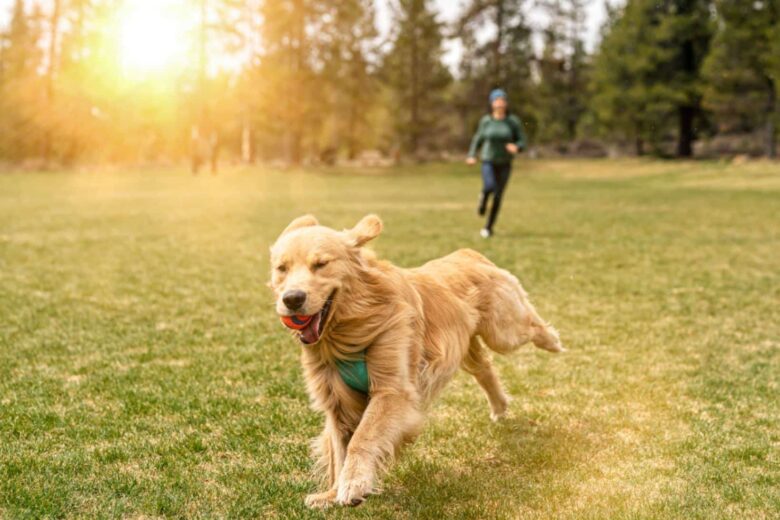Exercising your dog is an important part of keeping him healthy and happy. Pets, just like people, need daily exercise to keep their bodies and minds in good condition. This article discusses the importance of exercise to your pet’s health, including the benefits, recommended types and amounts of exercise, and how to safely add exercise to your pet’s daily routine.
The Importance of Physical Activity for Pets
Pets need to stay active for many reasons. It helps you maintain a healthy weight, which is important to prevent health problems such as diabetes, heart disease, and joint pain that can result from being overweight. Exercise not only strengthens your muscles but is also good for your heart and promotes digestion by keeping your bowel movements regular.
In addition to the physical benefits, exercise is also important for mental health. It keeps your mind active, reduces stress and sadness, and can even help you sleep better. Regular exercise prevents pets from becoming bored, which can lead to unwanted behaviors such as destructive chewing, excessive barking, or aggressive behavior.
Find out how much exercise your pet needs
Different pets need different types and amounts of exercise, depending on their age, breed, size, and overall health. For example, a young, active dog may need several hours of exercise per day, while an older dog or one with health problems may need shorter, less intense workouts.
Cats also need to be active every day. They often do this by playing games where they act as if they are hunting. Children can get enough exercise and mental stimulation from simple household items such as boxes and paper bags, as well as from interactive toys and climbing structures.
Provide different types of exercise for pets
There are many ways to keep your pet busy. Walking, running, swimming, and picking up things are all normal activities for dogs. Dog games such as Frisbee, flyball, and agility can provide your dog with more structured mental and physical challenges.
Cats enjoy playing with laser pointers or feather wands, chasing toys, or climbing cat trees. With the right toys and an enriched environment, even cats who stay at home can stay busy and interested.
Create a balanced exercise plan
A comprehensive exercise program should include tasks that strengthen muscles, improve heart health, and keep your mind active. If your pet is not used to regular exercise, it is best to start slowly and gradually increase the duration and amount of activity.
To create a comprehensive exercise program, pets can enjoy regular play, scheduled walks, and opportunities to meet other pets. Also, make sure that the tasks are varied so that your pet does not get bored.
Think safe
Although exercise is good for you, it is also important to do it safely. Take the weather into account, as too hot or too cold can be dangerous. To prevent bloat in your pet, make sure he has fresh water and doesn’t exercise too much before or after meals, especially if he is a larger breed.
Watch your hat for signs of strain, such as limping, excessive sweating, or not wanting to keep doing what you’re doing. If these occur, you should stop what you are doing and consult a doctor if necessary.
Make exercise suitable for different stages of life
As pets get older, their exercise needs to change, so it’s important to make sure what you do with them is appropriate for their age. Young pets often have more energy and may need more frequent and intensive exercise to stay healthy and engaged. Older cats, on the other hand, may benefit from gentler, more relaxed activities that keep them active without overstressing them. By understanding these changing needs and adjusting exercise routines accordingly, you can keep your pet healthy and active throughout its life.
Conclusion
Activities that keep cats active are important for their health and happiness. These activities can help them maintain a healthy weight and feel better mentally. You can help your pet live a balanced, healthy life by understanding his specific exercise needs and ensuring he gets a range of physical activities every day. Safety should always come first and activities should be varied based on your pet’s age, health, and tastes. Enjoying exercise with your pet will not only make their lives better, but it will also make your relationship stronger.
FAQs
1. How often should I walk my dog?
Every age, breed, and health condition requires a different amount of activity. Dogs typically need 30 minutes to two hours of exercise per day. Talk to your vet about what your dog needs to stay healthy.
2. Does the cat still get enough exercise if it lives indoors?
Yes, indoor cats can get plenty of exercise through interactive toys, climbing structures, and games that make them behave as if they are hunting. The key is to play regularly and make your environment more interesting.
3. What are the signs that my pet is being walked too much?
Excessive exertion can manifest itself as panting, limping, not wanting to continue exercising, and feeling tired. If you notice these symptoms, take it easy or shorten your exercise time and contact your doctor.
4. How do you safely wear a hat while walking when the weather is bad?
If it’s hot outside, practice when it’s cooler, give them plenty of water, and stay away from areas that are too hot. If it’s cold outside, make sure your pet has the right gear to stay safe and avoid getting too cold.
5. Are there certain exercises that are best for older pets?
Gentle, low-impact activities, such as short walks, light play, and exercises that maintain mobility without straining or injuring them, are good for older pets. Taking your hat to your vet for regular checkups can help you find the best way to train them.



